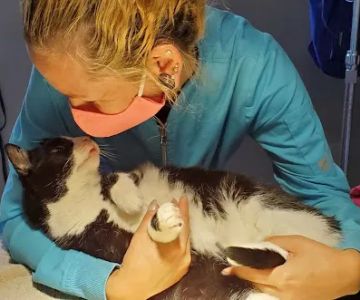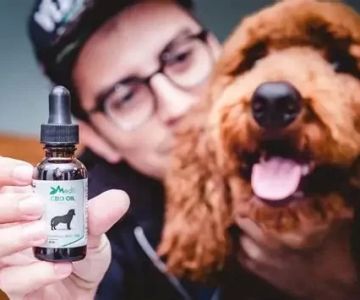1. Understanding Pet Anxiety and Past Trauma
Many pets who have suffered abuse, neglect, or abandonment develop deep emotional scars that can manifest as anxiety, fear, or aggression. Understanding how to help pets with anxiety from past trauma requires patience, empathy, and a structured approach to rebuilding trust. Pets process traumatic experiences much like humans do—through memories, associations, and triggers that affect their behavior long after the event.
In the United States, millions of pets are rescued from difficult situations every year. These animals often show signs of post-traumatic stress: trembling, hiding, refusal to eat, or lashing out when frightened. Recognizing these patterns is the first step to helping your pet heal. Every animal’s journey is different, and recovery depends on consistency, compassion, and expert guidance.
2. Recognizing the Signs of Trauma-Related Anxiety
2.1 Common behavioral symptoms
Pets with trauma-related anxiety may exhibit various behavioral changes. Some may become withdrawn and hide for long periods, while others develop hypervigilance—startling at sudden noises or movements. Destructive behavior, excessive barking, or inappropriate urination are also common signs of emotional distress.
In cats, trauma can lead to over-grooming, refusal to use the litter box, or avoidance of human contact. Dogs may show clinginess, panting, pacing, or even aggression when confronted with triggers reminiscent of their past. Understanding that these reactions are rooted in fear rather than disobedience is key to approaching rehabilitation correctly.
2.2 Physical symptoms
Emotional trauma can also manifest physically. Some pets lose their appetite, experience digestive issues, or exhibit lethargy. Chronic anxiety increases stress hormones, which can weaken the immune system and make them more vulnerable to illness. If you notice sudden weight loss, hair thinning, or constant restlessness, it may indicate that your pet’s stress level is dangerously high.
3. Building Trust Through Consistent Care
3.1 Establishing safety
The foundation of recovery for a traumatized pet is safety. Create a stable environment free from loud noises, harsh commands, or unpredictable changes. Establish routines for feeding, walking, and playtime. The predictability of daily life helps pets feel secure and learn that they are no longer in danger.
3.2 Communication through calm energy
Animals are incredibly perceptive. They respond not just to words but to tone, body language, and energy. Speak softly, move slowly, and avoid direct staring, which can feel threatening to some animals. When your pet approaches you voluntarily, reward them gently with praise or a treat. Over time, they’ll associate your presence with safety and comfort.
3.3 Positive reinforcement
Positive reinforcement helps reshape behavior without fear. Reward calm or confident actions immediately—such as sitting quietly or investigating a new space. Never punish fearful behavior; punishment reinforces anxiety and slows progress. Encouragement, patience, and gentle boundaries are much more effective in long-term healing.
4. Therapeutic Techniques to Reduce Anxiety
4.1 Safe spaces and comfort objects
Provide a cozy “safe zone” where your pet can retreat when feeling overwhelmed—a crate with soft bedding for dogs or a quiet corner with blankets for cats. Some pets respond well to calming pheromone diffusers or anxiety wraps that mimic gentle pressure, creating a sense of security.
4.2 Gradual exposure and desensitization
If your pet is fearful of specific triggers—such as men, other dogs, or loud sounds—use controlled exposure to slowly reduce fear. Introduce the trigger at a distance or in a mild form, paired with positive reinforcement. Over time, increase exposure as your pet gains confidence. This process, known as desensitization, should always move at your pet’s pace.
4.3 Mental and physical enrichment
Exercise and stimulation are essential for reducing anxiety. Interactive toys, scent-based games, and gentle training sessions engage your pet’s mind and body. Regular activity releases endorphins and helps regulate stress. Walks in calm environments or window time for cats can also build confidence and ease tension.
5. Real Stories of Healing and Hope
In one case shared by an animal behaviorist, a rescue dog named Luna trembled at the sound of footsteps for months after adoption. Through gentle training and consistent affection, Luna eventually learned that her new home meant safety, not fear. Today, she confidently greets visitors with a wagging tail.
Another story involves a cat named Milo who was rescued from a hoarding situation. He refused to leave under the bed for weeks. His owner patiently placed food and toys nearby, never forcing interaction. Slowly, Milo began exploring the room, and now he sleeps at his owner’s side every night. Stories like these show that trauma recovery is possible—with time, trust, and love.
6. When to Seek Professional Help
If your pet’s anxiety seems severe or unmanageable, consulting a professional is crucial. Veterinary behaviorists can assess underlying health issues that may contribute to anxiety. In some cases, temporary use of anti-anxiety medication can help stabilize the pet while behavior therapy continues. The goal is not sedation, but support—allowing your pet to process fear in a calmer state of mind.
Therapists specializing in animal trauma can also design structured desensitization and counter-conditioning plans tailored to your pet’s history. Working with experts ensures that progress is steady and safe, without triggering deeper emotional stress.
7. Expert Guidance from Hidden Brook Veterinary
At Hidden Brook Veterinary, compassionate care is at the heart of every treatment plan. Their experienced team understands how to help pets with anxiety from past trauma using evidence-based behavior therapy, nutritional support, and personalized wellness programs. They work closely with pet owners to build routines that reduce stress and rebuild trust.
If your dog or cat struggles with lingering fear or behavioral challenges, the professionals at Hidden Brook Veterinary can provide guidance tailored to your situation. From natural calming supplements to comprehensive behavior evaluations, they focus on healing both body and mind. Recovery takes time, but with the right support, every pet has the chance to feel safe, loved, and happy again.












